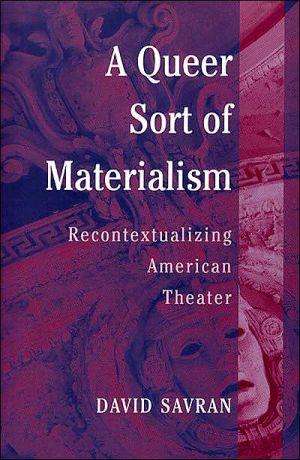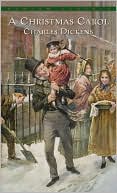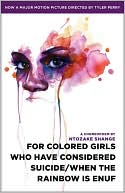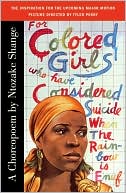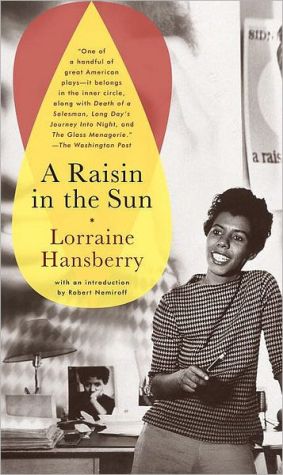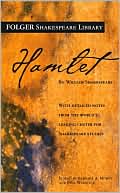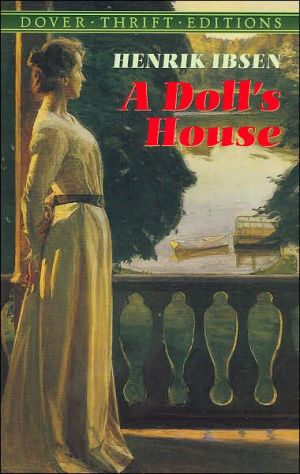A Queer Sort of Materialism: Recontextualizing American Theater
In engaging, accessible prose, leading theater critic and cultural commentator David Savran explores the intersections between art and culture, offering smart, compelling interpretations of the economic and social contexts of theatrical texts and practices. Acknowledging theater?s marginal status in U.S. culture, A Queer Sort of Materialism takes on ?the trouble-makers?the ghost, closeted homosexual, masochist, drag king, Third World laborer, even the white male as victim??who figure more...
Search in google:
An eclectic collection of essays on theater and its decline as highbrow culture, under the influence of theme parks and blockbuster movies
A Queer Sort of Materialism: Recontextualizing American Theater\ \ By David Savran \ University of Michigan Press\ Copyright © 2003 David Savran\ All right reserved.\ ISBN: 0472098365 \ \ \ Chapter One - Middlebrow Anxiety \ \ The self-appointed arbiters of taste during the 1950s were obsessed with cultural hierarchies. Given their insatiable appetite for categorization, they no longer judged the opposition between highbrow and lowbrow sufficient to account for the unprecedented variety of cultural productions made in the United States, from teen movies to abstract expressionism, from bebop to Queen for a Day, from "Hound Dog" to The Sound of Music. The terms highbrow and lowbrow were widely popularized, despite the fact that, as Michael Kammen points out, they "derived from the mid-Victorian fascination with cranial capacity, a curiously racist outlook that equated one [term] with high intelligence and the other with very limited mental abilities." Although the nineteenth-century phrenology that coined the words had long been discredited, the racist implications of these categories were less forgotten than disavowed in a society that was just beginning a long and violent process of desegregation. Nevertheless, the binary opposition produced by these terms could provide no more than a crude map of the patterns of cultural consumption during the post-World War II boom years, years that institutionalized bowling leagues and paid vacations and brought television, long-playing records, and paperback books into almost every American home. \ \ To complicate the opposition between highbrow and lowbrow, the arbiters of taste started increasingly to use the term middlebrow, an elastic category into which a great many cultural productions could conveniently fall. Although the word dates from the 1920s, "it did not," as Janice Radway notes, "become a prominent part of the cultural mapping until significantly later." By February 1949, middlebrow's moment had arrived. Russell Lynes penned a gently satirical essay for Harper's entitled "Highbrow, Lowbrow, Middlebrow" that caused quite a stir. Life magazine homed in on the story, "summarizing Lynes's bemused conclusions about American taste" and publishing a "two-page 'chart' [by Tom Funk] that classified and exemplified the public's taste levels in everything from clothes, entertainment, and drinks to reading, phonograph records, and games." Life's article became so popular that pigeonholing one's brow level became "for many months" a "favorite parlor game." Despite his essay's title, Lynes in fact produces four categories by dividing middlebrow into "upper" and "lower," the former peopled by "the principal purveyors of highbrow ideas," "cultural dogooders" like publishers and art dealers, and the latter by "the principal consumers of what the upper middlebrows pass along to them." Given his bemused tone, he is remarkably tolerant of differences in taste, unlike most of the critics who later weighed in on the subject--including Dwight Macdonald, Clement Greenberg, and Leslie Fiedler--who were far more condemnatory, far more concerned to position themselves in the highbrow category. \ \ Although these cultural critics (all of them associated with Partisan Review or other so-called little magazines) were at best distrustful, at worst contemptuous, of lowbrow, they reserved a special animus for the middlebrow culture from which they were so eager to distance themselves. As Andrew Ross emphasizes, the Cold War "age of consensus, which established liberal pluralism as the ideal model of a fully democratic, classless society ...depended, to a degree hitherto uncalled for, on the cultural authority of intellectuals," most of them leftists formerly associated with the Popular Front who were trying to navigate between the Scylla of anti-Stalinism and the Charybdis of McCarthyism. All felt a palpable distress over "terms like 'class' and 'mass,' so redolent of that vestigial marxist culture," and endeavored to contain "intellectual radicalism and cultural populism alike." Their obsession with taste thus represents an attempt to purge the social body of dangerous, seditious, and degrading cultural commodities and to educate and uplift. And they did so by championing a distortingly aestheticized rendering of the work of the high priests of the modernist avant-garde (Eliot, Joyce, Picasso, Stravinsky, and Frank Lloyd Wright), all of whom, Dwight Macdonald--incorrectly--alleges, "turned their backs on the marketplace, preferring to work for a small audience that . . . was sophisticated enough to understand them." \ \ The cachet of highbrow culture was dependent on its purported refusal of commodity status and its ability to function as a signifier of cultural purity, consecration, and asceticism during a period marked by the widespread and unprecedented availability of luxury goods, both utilitarian and decorative. For the hierarchization of taste did not correspond with social class. Lowbrow taste was almost always associated with a fraction--or perhaps I should say a fantasy--of the working class, the primitivized "masses" who were usually seen as dupes, or potential dupes, for those most un-American of ideologies, communism and fascism. But "most highbrows," according to Lynes, were members of "the ill-paid professions, notably the academic." The highbrow thus represents what Pierre Bourdieu would call a "dominated fraction of the dominant class," a highly educated and professionalized bourgeois(e) exiled, because of income level, from the upper classes. And the high-brow's contradictory class positionality and dedication to a then old-fashioned avant-gardism distinguished this aristocrat of taste from the upper-class, genteel tastemakers of the late nineteenth century who, according to Joan Shelley Rubin, "assigned to the 'best men' (like themselves) the task of freeing society at large from superstition, conformity, mediocrity, and debilitating economic competition." As Ross notes, the later Cold War highbrows, along with those arbiters of taste who were their apologists, represented, in contrast, "archaic hangovers of earlier modes of production" who were "still 'living off the capital' of the avantgarde," basing their cultural authority "upon borrowed and accumulated foreign (European) prestige." In a society undergoing swift and traumatizing changes and eager both to reinforce class boundaries and yet to deny their inflexibility, the appeal to the phrenological scale of brow level "legitimizes social inequalities because it presents social differences between people as if they were differences of nature," which is to say, biological rather than cultural. And in a country that had long disavowed the irreducibility of class struggle, "making hierarchical distinctions about culture," as John Seabrook notes, "was the only acceptable way for people to talk openly about class." \ \ If, in Lynes's estimation, the "highbrow's friend is the lowbrow," because the former "enjoys and respects the lowbrow's art--jazz for instance," then his or her "real enemy is the middlebrow," a social-climbing parvenu trying to "preempt . . . the highbrow's function" and "blur the lines between the serious and the frivolous." Unlike the lowbrow, who is positioned on the side of nature, the body, enjoyment, and "immediate pleasure or grief," the middlebrow is the unapologetic consumer and cultural middleman, a "pretentious and frivolous man or woman who uses culture to satisfy social or business ambitions." Lynes then approvingly quotes Clement Greenberg's accusation that "middlebrow culture attacks distinctions as such and insinuates itself everywhere." Like the portrayals of communism or homosexuality limned by Senator McCarthy and his associates, middlebrow culture represents a contagious social pathology, "infecting the healthy, corrupting the honest, and stultifying the wise." Because "insidiousness is of its essence,... its avenues of penetration have become infinitely more difficult to detect and block." \ \ All the attacks on middlebrow culture imagine it to be a feminized and/or homosexualized product (and one must bear in mind here the almost continuous linkage during the twentieth century between gender deviance and sexual deviance in a wide variety of discourses). The term was first popularized, after all, during the 1920s, shortly after women were granted the right to vote and were beginning to pursue, as Radway notes, a measure of sexual liberation "as dancing flappers and vamps." Surveying these political and social changes in connection to the rise of the Book-of-the-Month Club, she argues that "middlebrow culture belongs at the chiasma of several intersecting histories, that is, where the history of the rapidly restructuring economy intersects with the history of cultural production and with the history of women's changing social status and position." Throughout this period, the middlebrow reader "was typically gendered as female," associated with mass-produced and -distributed goods and considered part of "an undifferentiated mass of passive 'consumers.'" Thus the editor of the Bookman in 1926 warned of the rising "danger" of "regimentation," which he declared "as dangerous as Bolshevism." By so collapsing "machine culture itself and the rise of the masses" into the figure of the woman reader, the "critics of the book clubs" betrayed their fear of "engulfment, ingestion, and absorption less by the spreading ooze of middlebrow culture than by the effeminate masses that middlebrow culture materialized in its scandalous marketing." \ \ The attacks on middlebrow culture during the 1950s performed a function uncomfortably similar to those of the 1920s. For the post-World War II era saw a concerted attempt, after the considerable successes of the labor movement during the Great Depression, to control and cripple the masses--that is, organized labor. Congress passed the Taft-Hartley Act in 1947, one of the most repressive labor laws in U.S. history, which granted the president "the right to obtain injunctions forcing strikers to return to work"; banned "contributions from union dues to political candidates"; gave "states the power to pass 'right-to-work' laws, outlawing the closed shop"; and required "union officials to sign non-Communist affidavits." The postwar tastemakers, however, associated organized labor less with lowbrow than with middlebrow culture. According to Lynes, "the middlebrows" represent "the dominant group in our society--a dreadful mass of insensible backslappers,... the willing victims of slogans and the whims of the bosses, both political and economic." And although this portrayal fixates on an implicitly male union member or "organization man," Lynes immediately switches gender as he elaborates on this image. For the middlebrow world through which this man passes is unrelentingly feminized insofar as he is imagined to be an obedient stooge and victim. His world is that of "'the typical American family'--happy little women, happy little children, all spotless or sticky in the jam pot, framed against dimity curtains in the windows or decalcomania flowers on the cupboard doors." Focusing on the lower middlebrows in particular, Lynes observes that they \ \ \ decorate their homes under the careful guidance of Good Housekeeping and the Ladies' Home Journal . . . and are subject to fads in furniture....In matters of taste, the lower-middlebrow world is largely dominated by women....Except in the selection of his personal apparel and the car, it is almost infra dig for a man to have taste; it is not considered quite manly for the male to express opinions about things which come under the category of "artistic."\ The lower-middlebrow worldview is thus defined not in the occupational or professional realms but in the private sphere, through feminized domestic labor and the pursuits that occupy a man during his leisure hours. And as becomes visible in unmistakably middlebrow cultural productions (like Arthur Miller's Death of a Salesman), fears about standardization, commodity culture, victimization, organized labor, and "mass man" are routinely displaced onto women and the domestic sphere. \ \ Unlike the discourse of taste during the 1920s, that of the 1950s routinely imagines the feminization of the middlebrow to be accompanied by suggestions of sexual deviance. This is in part the result of the routine conflation of effeminacy with male homosexuality during the period. But writers like Dwight Macdonald take this association well beyond the routine. Masscult ("mass culture") is bad enough; it is "an instrument of domination" that is exercised on that "collective monstrosity, 'the masses,' 'the public.'" But middlebrow culture, for Macdonald as for Greenberg before him, is first and foremost a depravity that is clearly sexualized in Macdonald's lurid prose: \ \ \ In these more advanced times, the danger to High Culture is not so much from Masscult as from a peculiar hybrid bred from the latter's unnatural intercourse with the former. A whole middle culture has come into existence and it threatens to absorb both of its parents. This intermediate form--let us call it Midcult--has the essential qualities of Masscult--the formula, the built-in reaction, the lack of any standard except popularity--but it decently covers them with a cultural figleaf.\ For Macdonald and all the midcentury theorists of taste, middlebrow culture represents first and foremost a scandalous interpenetration of high and low. Combining opposites, it blurs boundaries or--worse yet--obliterates them entirely. A virulent form of cultural miscegenation, it brings together those things (and presumably persons) that should be kept separate. Yet Macdonald sexualizes middlebrow more explicitly than most of his contemporaries. For him, it is a vexing, obscene, and contradictory phenomenon. On the one hand, it represents the product of a perverse, heterosexual--and arguably, miscegenated--coupling that produces a "bastard" child. According to this logic (and the long association of mass culture with both femininity and African American traditions), Masscult is figured as a kind of loose woman, a Delilah or Jezebel, who seduces and pollutes High Culture in order to produce a dangerous, cross-race, illegitimate upstart who threatens, Oedipus-like, to destroy its progenitors. Moreover, the "essential qualities" of this bastard offspring are figured as being so obscene--and genital-like--that they must be covered by a "figleaf." On the other hand, the "unnatural intercourse" that produces Midcult also bears the unmistakable signs of a homosexual seduction. This is in part the result of Cold War culture's habit of telescoping, as Elaine Tyler May notes, the various "degenerative seductions" that preyed upon a man and that could occupy the category of the unnatural: "pornography, prostitution, 'loose women,' or homosexuals." More important, however, is the fact that Midcult, like the homosexual or communist of Cold War fantasies, attempts to pass for something else. As May emphasizes, both figures were imagined as being subversive infiltrators whose power came from their ability to dissimulate: "Like communists who would presumably infiltrate and destroy society, sexual 'perverts' could spread their poison simply by association." Boring from within, insinuating and subverting, Midcult "pretends to respect the standards of High Culture while in fact it waters them down and vulgarizes them." Exploiting "the discoveries of the avant-garde," it surreptitiously turns them into "kitsch for the elite." If, according to a Senate report, it takes only "one homosexual" to "pollute a Government office," it takes only one Midcultist to destroy legitimate cultural values. \ \ Although Macdonald's attack on culture is more panic-stricken than most, all the pronouncements on taste, like so many Cold War discourses on politics and sexuality, seem motivated by fear--fear of communism, fascism, standardization, "mass man," unrestrained sexuality, miscegenation, loose women, "artistic" men, sexual perverts. But social power derives less from the stigmatizing force of these categories than from the ability to fashion them in the first place. Anticommunism and homophobia were such effective tools during the 1950s because they kept the already anticommunist and heterosexual majorities in line. The policing of political affiliations, sexual practices--and, I would add, levels of taste--thus functioned as an extremely efficient and far-reaching mode of containment during a period of controlled panic over perceived threats to U.S. economic, political, and cultural hegemony. For all the Brahmin-like assurance that writers like Macdonald and Greenberg seem to project, their discourses are in fact shot through with a profound sense of dis-ease. And I want to argue that the principal affect associated with middlebrow--understood as a mode of cultural production, a level of taste, and a critical apparatus--is anxiety. Middlebrow cultural producers, consumers, and critics alike are always looking over their shoulders; always fearful of encroachments from above or below; always uneasy about their own class positionality and their own tastes; always trying to negotiate between creativity and the exigencies of the marketplace, between politics and aesthetics, between an art that requires studied investment and the desire for untrammeled pleasures. \ \ The linkages among middlebrow culture, anxiety, and Cold War America are by no means illogical. For despite all the attempts (in Hollywood and elsewhere) during the 1950s to portray the United States as a consumerist utopia, many deeply intransigent social problems, inequities, and oppressive social conditions were either ignored or naturalized. Simultaneously, as if taking their cues from these disavowals, many of the leading figures in the social and biological sciences became preoccupied with anxiety, which, not surprisingly, they suddenly saw everywhere. It was, after all, as W. H. Auden put it, the "Age of Anxiety." In 1950, Rollo May published The Meaning of Anxiety, in which, drawing on Freud's theory of anxiety being the result of unconscious conflicts and desires, he carefully distinguishes anxiety from fear. The latter represents a response to "the presence of a known danger," a response whose "strength" is "more or less proportionate to the degree of danger." But "anxiety is unspecific, vague, 'objectless'"; attacks "the 'core' or 'essence' of the personality"; and is characterized by "diffuse, painful, and persistent feelings of uncertainty and helplessness." According to May: \ \ \ Anxiety is the apprehension cued off by a threat to some value that the individual holds essential to his existence as a personality. The threat may be to physical life (the threat of death), or to psychological existence (the loss of freedom). Or the threat may be to some other value one identifies with one's existence (patriotism, the love of another person, "success," etc.).\ \ \ Continues... \ \ \ \ Excerpted from A Queer Sort of Materialism: Recontextualizing American Theater by David Savran Copyright © 2003 by David Savran. Excerpted by permission.\ All rights reserved. No part of this excerpt may be reproduced or reprinted without permission in writing from the publisher.\ Excerpts are provided by Dial-A-Book Inc. solely for the personal use of visitors to this web site. \ \
Pt. IHistorical Pageants1Middlebrow Anxiety32The Queerest Art563The Haunted Stages of Modernity82Pt. IICloset Dramas4Ambivalence, Utopia, and a Queer Sort of Materialism: How Angels in America Reconstructs the Nation1075The Sadomasochist in the Closet: Sam Shepard, Robert Bly, and the New White Masculinity1346A Different Kind of Closet Drama; or, The Melancholy Heterosexuality of Jane Bowles1557Eat Me1708In and Out1809Paula Vagel as Male Impersonator187Notes205Index225
